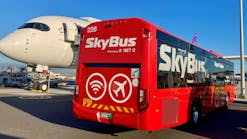Fred Workley offers maintenance and operating tips for safe operation of forklifts.
May 2003Forklift accidents are among the leading cause of workplace deaths, killing more than 100 and injuring about 94,000 employees annually. The Occupational Safety and Health Administration standard 29 CFR 1910.178 addresses forklift operator training. Training includes formal instruction, practical training, and an evaluation of the operator's performance. The employer must certify that employees complete the required training and a performance evaluation should occur once every three years after the initial certification. Refresher training should occur if equipment changes, unsafe practices are observed, or if workplace conditions change.
Forklifts often have interlock devices. Interlocks can be checked in an area where there is no danger to personnel or property. Some forklifts will not start unless the controls are in neutral or the clutch is depressed. Some interlocks stop the forklift or apply the parking brake if no one is in the seat.
Special caution should be taken when charging the batteries or refueling. Battery cables and connector should not get hot. Look for leaked or spilled battery electrolyte. Always turn off the engine before fueling. Ground the spout and fill pipe by a bonding strap and ground wire. When filling LPG tanks, always relieve the pressure in the LPG lines before disconnecting. This is done by turning off the tank valve and running the engine until the lines are empty. Turn off the engine and make sure that the LPG tanks are secured to the forklift before turning on the valve on the replacement tank.
You need to be constantly vigilant to drive a forklift safely. Do not exceed the weight limits. Be aware of the height of the forklift mast and the top of the load so that it clears any obstacles. If you can't see in front of the load, back up instead. Make sure that bridge plates and dock boards are in place.
The following is a quick quiz to test your forklift operation knowledge. See how well you can do as well as where you can improve in operational safety.
Forklift Operator Written Test
- A forklift-training program will help:
A. Reduce accidents
B. Increase efficiency
C. Reduce maintenance
D. All of the above - The rear-end steering of forklift trucks:
A. Is about the same as an auto
B. The rear end swings less than an auto
C. Causes the rear end to swing more than an auto
D. Allows the forklift to take sharp turns at high speeds - When traveling on a level surface the fork should be raised:
A. No more than 6 inches
B. At least 12 inches
C. Between 12 to 18 inches
D. High enough so the operator can see under the load - Lift trucks should be inspected:
A. Daily
B. Weekly
C. At the start and end of the shift
D. When they start to develop malfunctions - From a safety standpoint, one of the most serious truck defects is:
A. Worn tire
B. Low fuel or battery charge
C. Broken horn
D. Brake failure - When following another forklift it is best to keep behind:
A. About one forklift length
B. About the length of three forklifts
C. About 10 to 12 feet
D. Close enough so the other operator can hear your horn - The forklift horn should be used to:
A. Warn pedestrians and other traffic at intersections and blind corners
B. Make workers get out of your path when you get too close to them
C. Let your supervisor know that you're busy
D. Let everyone know you have the right of way - If you have to leave a truck unattended, even with the power off, you should:
A. Ask someone to tell you if it starts to move
B. Be in clear view of it and no more than 25 feet away
C. Be no farther away than in the washroom if the forks are off the ground
D. Be no farther than 45 feet away if you're helping to load stock
Answers:
1. D 3. A 5. D 7. A
2. C 4. C 6. B 8. B
True or False
- The maximum allowable load should be shown on the nameplate of the truck.
- It is permissible to overload the truck by 25
percent if additional counterweights are used. - The load should not be handled if it is so unstable or so insecure that it might come loose while being moved.
- It is good practice to keep the load back against the forklift mast as much as possible.
- When going down a 15 percent incline keep the load on the downside.
- Violation of safety rules, near misses and occasional damage to stock probably indicates a high accident and maintenance rate.
- Only trained and authorized persons should make repairs to industrial forklifts.
- It is permissible to run over a loose dock plate as long as the truck is not fully loaded.
- If you see a loose object in your path it is better to remove it or avoid it than run over it.
- Slippery spots caused by oil and water may increase
braking distance or cause loss of
steering control. - If you are not able to see because of a large load in front of you, it is better to drive backwards than to try to see around it on one side.
- If they ask, maintenance men or repairmen may be lifted on the forks to reach their work.
- Under no conditions should anyone be permitted under the elevated forks or loads.
- When loading a highway truck or trailer, its wheels should be chocked or blocked even though the driver says he has set the brakes.
- Railroad tracks should be crossed at right angles.
- Smoking is permissible in refueling areas providing you see no leaking fuel.
- Parked forklifts should never block fire equipment, fire doors, or exits.
- A careful driver may hang his/her legs outside the forklift as long as a wide load offers protection.
- A forklift operator checks each load for stability before moving it.
- Passing another truck in a narrow aisle is safe if it is going no more than 8 mph.
- When taking a load up a ramp with greater than a 10 percent slope, the forks should be on the up side.
- When going through doorways and under pipes, an operator must know clearance of large elevated loads.
- A really proficient forklift driver should demonstrate his ability by turning corners as quickly as possible.
- It is permissible to let another person operate your truck if he or she says he/she knows how but is not certificated and has not taken the written test and the Forklift Operator Practical Performance Test.
- When traveling with a load the mast should be tilted back.
Answers:
1. T 2. F 3. T 4. T 5. F 6. T 7. T
8. F 9. T 10. T 11. T 12. F 13. T 14. T
15. F 16. F 17. T 18. F 19. T 20. F 21. T
22. T 23. F 24. F 25. T
Ready for the open ramp or warehouse? The following will test the Operator's
ability to perform items on this checklist for safe forklift operation.
Knowledge of controls and features:
- Proper use of control including technique and proper movement of controls to get the desired movement.
- Proper positioning of all controls, parking brakes, and switches when leaving the forklift unattended.
- Parking and Service brakes.
- Steering techniques.
- Clutch operation.
- Inching control w/automatic transmission.
- Lift and Tilt controls.
- Attachments controls.
Maneuvering skills:
- Smooth starting and stopping.
- Sharp turns forward and stopping.
- Proper speed.
- Looks in direction of travel.
- Clears obstacles by safe distance.
- Carries forks low.
Selecting loads:
- Lift capacity of forklift.
- Load size for safe handling and visibility.
- Load tilted back against backrest.
- Carry load low with just enough clearance to clear floor obstacles.
Driving with load:
- Smooth starting and stopping.
- Proper speed.
- Sounds horn at corners and intersections.
- Keeps to right in two-way traffic.
- Leaves at least three lengths behind other vehicles.
- Prevents product damage by proper handling of load.
Stacking:
- Approaches load squarely.
- Stacks straight and square.
- Does not stack to high.
- Places load safely, does not use excessive tilt action.
- Uses proper spread of forks for load especially when selecting top load for pickup.
- After placing load, before making turns, lowers lift to safe level.
Dock safety:
- Checks dock and bridge plates before crossing.
- Checks trailers for proper chocking before entering and proper jack installation of trailers where required.
- Checks rail cars for positioning and safe loading conditions.
A trend that is developing with testing in regards to certification is to have it corrected to 100 percent. What this means is that any areas that aren't answered correctly need to addressed with additional training to ensure that the material and regulations are clearly understood.






